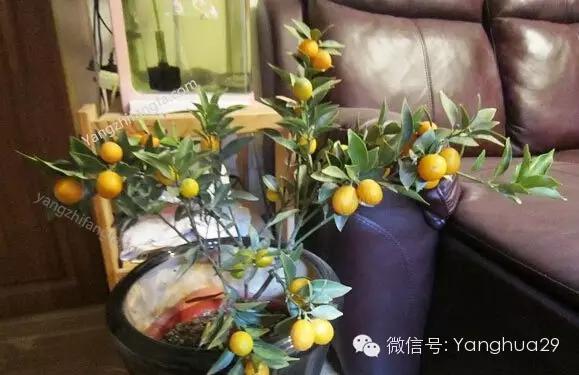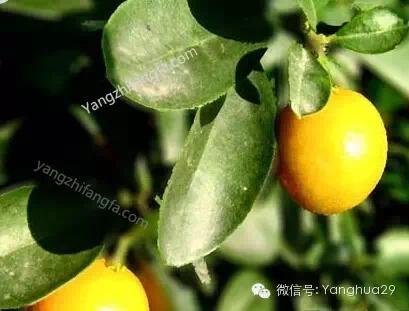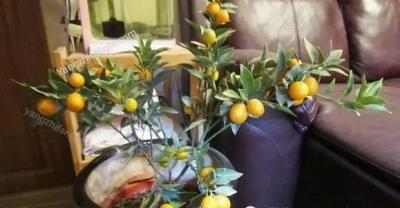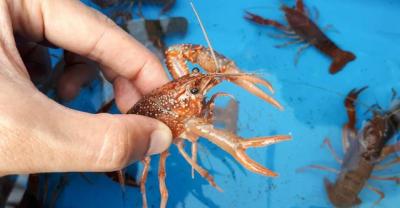Culture methods and matters needing attention of kumquat and ornamental kumquat
Kumquat is an evergreen shrub or small tree, the fruit is golden yellow, with fragrance, hanging fruit for a long time, is an excellent ornamental flower. It is suitable for potted ornamental and bonsai, at the same time, it tastes sour and sweet, and it is planted as fruit trees in the south. Kumquat trees like sunshine and warm, humid environment, not cold-resistant, slightly shade-tolerant, drought-tolerant, requiring fertile, loose, slightly acidic sandy loam with good drainage.

Culture methods of kumquat trees
Kumquat is a light-loving plant, but if the sun is too strong, it will have poor growth and development. The annual average temperature suitable for growth is more than 15 ℃, and the optimum growth temperature is 23 ℃ to 29 ℃. If the growth stops when it exceeds 35 ℃, it will suffer frost injury when-2 ℃. Kumquat trees generally do not need to cool down in summer, enter the room before Frosts Descent and leave the room after Qingming Festival, which can survive the winter safely.
Kumquat trees can be propagated by grafting. The rootstock uses Chinese tangerine, lime or sown seedlings. The grafting methods are grafting, bud grafting and leaning grafting, branch grafting, and splicing method in March-April of spring. The bud grafting was carried out from June to September, and the pot planting was usually carried out from April to July.
Kumquat needs more water in its growth and development. Generally speaking, water should be properly watered in spring. The summer light is strong, the temperature is high, needs more water. However, it should be timely and appropriate, otherwise it will cause fruit drop. Autumn is the period of shoot growth and rapid fruit expansion, so there must be sufficient water. Late autumn and winter are the period of flower bud differentiation, while the basin soil is dry. Golden orange trees prefer fertilizer, in addition to pots, change pots to apply sufficient base fertilizer, the growing period should adhere to the principle of frequent application of thin fertilizer. The times and amount of fertilization should be determined according to the growth and phenological period. For example, it is better to apply liquid fertilizer to fully fermented cake fertilizer and water, and the ratio of cake to water is 1VR 200. The soil in the north is slightly alkaline, so ferrous sulfate can be added to the fertilizer solution to form a slightly acidic nutrient solution.
Potted golden orange trees require proper management of water and fertilizer. Before the spring buds germinate, cut off some of the old branches, leave 2-3 buds for the strong ones, and leave 3 pruned 1-year-old branches for each plant, which is beneficial to the spring shoot germination. When the new buds grow to 15-20 cm, the branches will be plump. When the branches grow at the same time, apply a quick-acting phosphate fertilizer, such as superphosphate, prevent branches and leaves from growing, promote flower bud differentiation and blossom and bear fruit. At the end of May, the spring shoots blossom and bear fruit in the same year, and the flowers should be thinned properly during the flowering period. after setting the fruit, it is appropriate to thinning the fruit once according to the tree potential, 2-3 per branch. Cut off the autumn shoot in time to prevent the second fruit.

How to raise kumquat trees
Suitable illumination
The kumquat should be kept in a sunny place during maintenance. If the light is not enough and the environment is shaded, it will often cause branches and leaves to grow, blossom and bear fruit less. Because kumquat likes cool climate in summer, or summer sunshine intensity is large, it is better to put it slightly in the shade at this time.
Skillful pruning
Pruning is an important technical measure to make kumquat blossom fruitful. In order to make the tree beautiful and fruitful, each year, before the sap begins to flow, a re-pruning is carried out before the spring buds germinate, cutting off withered branches, disease and insect branches, over-dense branches and overgrown branches, leaving only 2-3 buds at the base of each branch and cutting off the rest.
Apply sufficient fertilizer
Kumquat likes fertilizer, and the culture soil mixed with 4 rotten leaf soil, 5 sand soil and 1 cake fertilizer should be selected when potted. When changing the basin, apply hoof slices or rotten cake fertilizer to the bottom of the basin as base fertilizer. From the beginning of new bud germination to before flowering, mature shallow paste residue water can be applied every 7-10 days, and alum fertilizer water can be poured alternately several times. After the beginning of summer, it is appropriate to apply more phosphate fertilizer to facilitate bud pregnancy and fruiting.
Pour good water
Kumquat likes to be wet but avoid stagnant water, and the pot soil is easy to rot if the soil is too wet. Therefore, it is better to keep the basin soil moist during the growth period. It is dry and windy in spring. Spray water on the leaves once a day to increase air humidity. Spray water 2 or 3 times a day in summer, and spray water to the ground. But avoid spraying water during flowering to prevent rotten flowers and affect the fruit. The stagnant water in the basin should be dumped in time in the rainy season to avoid rotting roots. When you put it outdoors in summer, it is best to use bricks to cushion the flowerpot to facilitate drainage.
Control insect pests
According to years of practice, it has been proved that no disease has been found in kumquat, and only yellow butterfly (also known as citrus butterfly) is harmful. The adult is 30 mm long, with a wingspan of 100 mm, yellowish green and a broad black longitudinal pattern on the back. The front wings are daily, and the rear wings are 6. The egg is round, 1 mm in diameter, yellowish white. The larvae feed on the new leaf buds and eat day and night, which can easily cause the leaves of kumquat to be engraved or gnawed off. The treatment of this pest: spray 1000 times of 50% fenitrothion or 1000 times of dichlorvos during the larval stage to catch insecticidal pupae outside the branches.
Knowledge of flower cultivation
Wechat: yanghua29
Flower cultivation knowledge exchange, provide the most comprehensive flower knowledge, professional flower cultivation skills, comprehensively solve the problem of flower cultivation!
- Prev

Plants suitable for office farming, both good-looking and transporting
One must endure humiliation in order to get what one deserves. If you find an opponent, you will become a master. If your personality can make people successful, you are early.
- Next

In winter and spring aquaculture, cleaning pond disinfection is very important!
Why do ponds need to be disinfected? Aquaculture ponds due to feeding fertilization, animal excretion and other reasons are easy to cause bottom deposition phenomenon, in order to ensure the safety of farmed animals.
Related
- On the eggshell is a badge full of pride. British Poultry Egg Market and Consumer observation
- British study: 72% of Britons are willing to buy native eggs raised by insects
- Guidelines for friendly egg production revised the increase of space in chicken sheds can not be forced to change feathers and lay eggs.
- Risk of delay in customs clearance Australia suspends lobster exports to China
- Pig semen-the Vector of virus Transmission (4)
- Pig semen-the Vector of virus Transmission (3)
- Five common causes of difficult control of classical swine fever in clinic and their countermeasures
- Foot-and-mouth disease is the most effective way to prevent it!
- PED is the number one killer of piglets and has to be guarded against in autumn and winter.
- What is "yellow fat pig"? Have you ever heard the pig collector talk about "yellow fat pig"?

